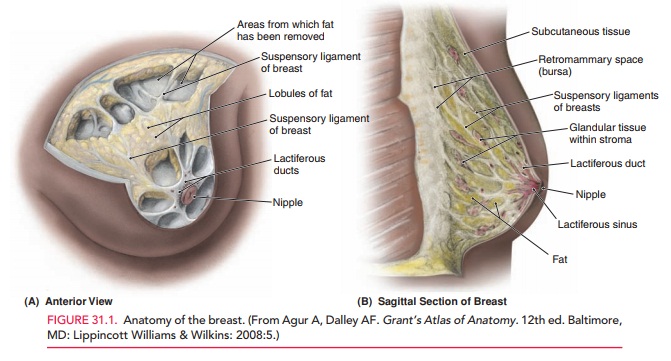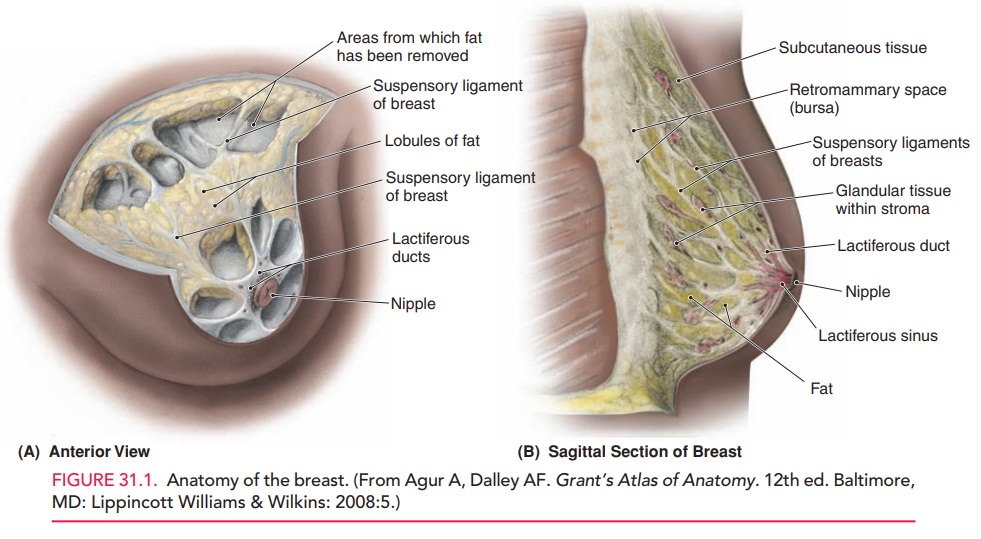Chapter: Obstetrics and Gynecology: Disorders of the Breast
Anatomy of the Breast

ANATOMY
The adult female breast is
actually a modified sebaceous gland, located within the superficial fascia of
the chest wall (Fig. 31.1). Histologically, the breast is composed primar-ily
of lobules or glands, milk ducts, connective tissue, and fat. The relative
amounts of these tissue types vary con-siderably with age. In younger women,
the breast con-sists predominantly of glandular tissue. With age, the glands
involute and are replaced by fat, a process accel-erated by menopause.
Differences in palpable consis-tency and in radiographic density between the
glands and fat are key components of breast cancer detection programs.

Architecturally, the breast is
organized into 12 to 20 lobes, with a disproportionate amount of the glandular
or lobular tissue in the upper outer quadrants of each breast. This
disproportionate distribution of glandular tis-sue accounts for why breast
cancer most commonly arises in the upper outer quadrant. The lobules consist of
clusters of secretory cells arranged in an alveolar pattern and sur-rounded by
myoepithelial cells. These glands drain into a series of collecting milk ducts
that course through the breast, ultimately coalescing into approximately five
to ten collecting ducts that lead to and drain at the nipple. Typically, cancer
begins at these terminal duct-lobular units of the breast and follows the path
of those ducts.
Congenital anomalies of the
breast can include absence of the breast as well as accessory breast tissue
located any-where along the “milk lines,” which extend from the axilla to the
groin in the fetus. Extra nipples (polythelia)
are more common than true accessory breasts (polymastia).

The breast has a rich blood
supply and lymphatic sys-tem, which support milk production and overall breast
health. The blood supply comes from perforating branches of the internal
mammary artery, the lateral thoracic artery, the thoracodorsal artery, the
thoracoacromial artery, and various intercostal perforating arteries. The lymphatic
ves-sels lead to several superficial and deep nodal chains throughout the trunk
and neck, including those located in the axilla, deep to the pectoralis
muscles, and caudal to the diaphragm (Fig. 31.2). The ipsilateral lymph node
and occasionally the internal mammary nodes are the most common route of
metastasis.
Breast
tissue is very sensitive to hormonal changes, espe-cially the glandular cells. The
transition from the immature,pediatric breast to the mature, adult breast is
orchestrated by the changes in circulating levels of estrogen and proges-terone
that accompany puberty. Estrogen is
primarily responsible for the growth of adipose tissue and lactifer-ous ducts.
Conversely, progesterone stimulation
leads to lobular growth and alveolar budding.
Related Topics